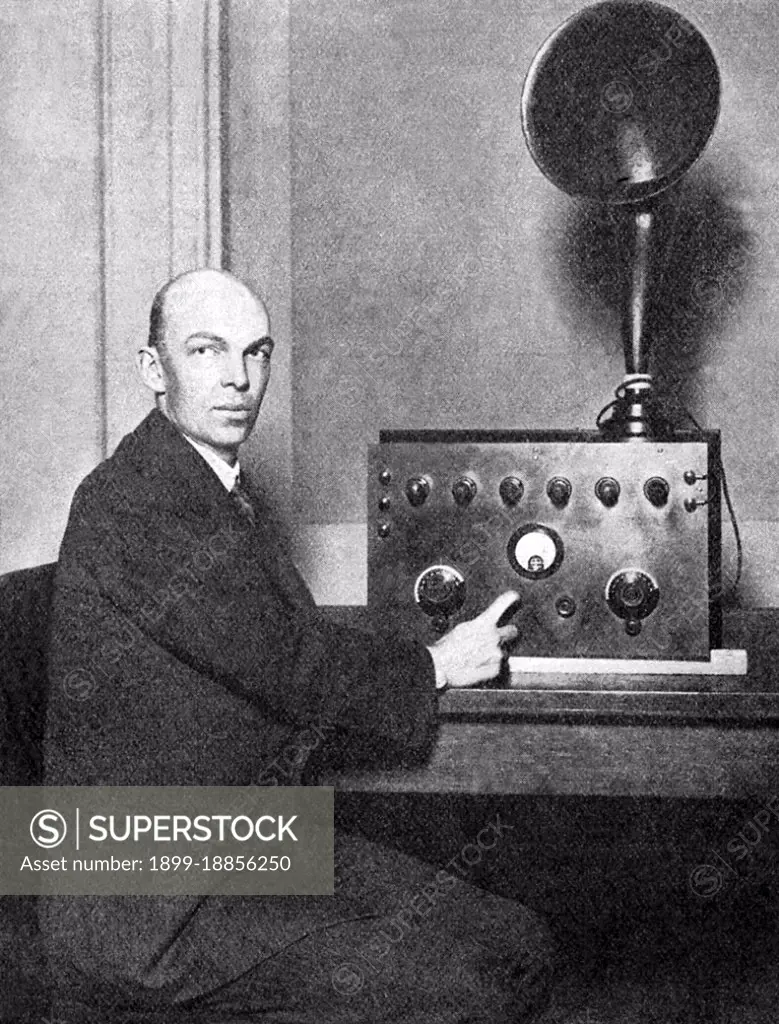Edwin Howard Armstrong (December 18, 1890 - January 31, 1954) was an American electrical engineer and inventor. He has been called 'the most prolific and influential inventor in radio history'. He invented the regenerative circuit while he was an undergraduate and patented it in 1914, followed by the super-regenerative circuit in 1922, and the superheterodyne receiver in 1918. Armstrong was also the inventor of modern frequency modulation (FM) radio transmission. Armstrong was born in New York City, New York, in 1890. He studied at Columbia University. He later became a professor at Columbia University. He held 42 patents and received numerous awards, including the first Institute of Radio Engineers now IEEE Medal of Honor, the French Legion of Honor, the 1941 Franklin Medal and the 1942 Edison Medal. He is a member of the National Inventors Hall of Fame and the International Telecommunications Union's roster of great inventors.
SuperStock offers millions of photos, videos, and stock assets to creatives around the world. This image of Edwin Howard Armstrong (December 18, 1890 - January 31, 1954) was an American electrical engineer and inventor. He has been called 'the most prolific and influential inventor in radio history'. He invented the regenerative circuit while he was an undergraduate and patented it in 1914, followed by the super-regenerative circuit in 1922, and the superheterodyne receiver in 1918. Armstrong was also the inventor of modern frequency modulation (FM) radio transmission. Armstrong was born in New York City, New York, in 1890. He studied at Columbia University. He later became a professor at Columbia University. He held 42 patents and received numerous awards, including the first Institute of Radio Engineers now IEEE Medal of Honor, the French Legion of Honor, the 1941 Franklin Medal and the 1942 Edison Medal. He is a member of the National Inventors Hall of Fame and the International Telecommunications Union's roster of great inventors. by Pictures From History/Universal Images is available for licensing today.
Looking for a license?
Click here, and we'll help you find it! Questions? Just ask!
Click here, and we'll help you find it! Questions? Just ask!
DETAILS
Image Number: 1899-18856250Rights ManagedCredit Line:Pictures From History/Universal Images/SuperStockCollection:
